Creating a personal safety theme for preschoolers is crucial in teaching them about staying safe in various situations. The following article provides information on The Importance For Young Children To Learn About Personal Safety, Personal Safety Activities For Young Children, Examples Of Success Stories Related To Personal Safety Education, Effective Teaching Methods For Personal Safety Education, Effective Teaching Methods For Personal Safety Education, Methods Tailored For Different Age Groups and more.
The Importance For Young Children Learning About Personal Safety
Teaching young children about personal safety is essential for their well-being and development. Here's why it's so important:
1. Developing Awareness
Understanding Dangers: Young children need to learn about potential dangers in their environment, such as strangers, unsafe objects, and risky situations. This awareness helps them recognize and avoid hazards.
2. Building Confidence
Empowering Choices: When children understand how to stay safe, they feel more confident in their abilities to make decisions and protect themselves. This self-assurance is crucial for their overall development.
3. Preventing Accidents
Safety Skills: Teaching children about safety rules, like looking both ways before crossing the street or not touching hot objects, helps prevent accidents and injuries.
4. Enhancing Problem-Solving Skills
Critical Thinking: Learning about personal safety involves making decisions and solving problems. This process enhances children's critical thinking and decision-making skills.
5. Encouraging Communication
Expressing Concerns: When children know they can talk to trusted adults about their fears or uncomfortable situations, it fosters open communication and ensures they seek help when needed.
6. Promoting Independence
Self-Reliance: Personal safety education encourages children to take responsibility for their well-being, promoting independence and self-reliance.
7. Establishing Boundaries
Personal Space: Teaching children about personal boundaries and consent helps them understand their rights and the importance of respecting others' boundaries.
8. Supporting Emotional Well-being
Reducing Anxiety: Knowledge of personal safety reduces anxiety and fear in children, as they feel more secure and prepared to handle different situations.
9. Encouraging Empathy and Responsibility
Caring for Others: When children learn about safety, they also learn to look out for their friends and family, fostering a sense of empathy and responsibility towards others.
Personal Safety Activities For Young Children
1. Safe and Unsafe Scenarios
Activity: Use pictures or role-playing to show different scenarios. Ask the children to identify which ones are safe and which are not. This can include situations like talking to strangers, crossing the street, and playing with sharp objects.
2. Emergency Contact Information
Activity: Teach children how to dial emergency numbers and the importance of knowing their full name, address, and parent's phone number. Use toy phones to practice.
3. Stranger Danger
Activity: Read a story about a character who encounters a stranger. Discuss what the character should do and role-play safe responses.
4. Fire Safety
Activity: Have a fire drill practice. Teach children to stop, drop, and roll. You can also show them how to crawl low under smoke.
5. Safe Play
Activity: Set up different play stations with safe toys and equipment. Discuss why certain toys are safe and why some are not appropriate for their age.
6. Traffic Safety
Activity: Create a small "road" in your play area with crosswalks and traffic signs. Teach children how to look both ways before crossing and the importance of traffic lights.
7. Personal Space and Boundaries
Activity: Use hula hoops or chalk circles to demonstrate personal space. Teach children to respect others' personal space and to speak up if someone makes them uncomfortable.
8. Buddy System
Activity: Pair children up and explain the importance of staying with a buddy in crowded or unfamiliar places. Practice walking together and watching out for each other.
9. Safety Songs and Rhymes
Activity: Sing songs about safety, such as "The Stop, Drop, and Roll Song" or "The Safety Song." Music helps reinforce important safety messages.
10. Creating Safety Posters
Activity: Have children draw and color posters about different safety rules. Display these posters around the classroom as a constant reminder.
Examples Of Success Stories Related To Personal Safety Education
Here are a few success stories that highlight the impact of personal safety education:
1. Stranger Danger Awareness
Story: In a preschool in the United States, children were taught about stranger danger through role-playing and storytelling. One day, a child was approached by a stranger while playing in the park. Remembering the lessons from school, the child immediately ran to a nearby adult and reported the incident. The quick thinking and awareness helped prevent a potentially dangerous situation.
2. Fire Safety Drill
Story: At a childcare center in Australia, regular fire safety drills were conducted to teach children how to respond in case of a fire. During an actual fire emergency, the children knew exactly what to do. They followed the practiced procedures, stayed calm, and evacuated the building safely. The staff credited the success to the consistent fire safety education and drills.
3. Internet Safety for Kids
Story: A school in the UK implemented an internet safety program for young children. The program included lessons on not sharing personal information online and recognizing safe websites. One student, while using a tablet at home, encountered a suspicious website asking for personal details. The child immediately informed their parents, who praised the school's internet safety education for teaching their child to recognize and avoid online dangers.
4. Buddy System Success
Story: In a kindergarten in Canada, the buddy system was introduced to ensure children always had a partner during outdoor activities. One day, a child tripped and fell while playing outside. The buddy quickly alerted a teacher, who provided immediate assistance. The buddy system not only helped in this situation but also fostered a sense of responsibility and care among the children.
5. Traffic Safety Awareness
Story: A preschool in Japan incorporated traffic safety lessons into their curriculum. Children learned about traffic lights, pedestrian crossings, and the importance of looking both ways before crossing the street. One child, while walking with their family, reminded everyone to wait for the green light before crossing. The parents were impressed by their child's awareness and credited the school's traffic safety education.
These stories demonstrate the positive impact of personal safety education in various settings. By teaching children essential safety skills, we can empower them to make safe choices and respond effectively in different situations.
Effective Teaching Methods For Personal Safety Education
Teaching personal safety to young children can be both engaging and effective when using the right methods. Here are some strategies to consider:
1. Role-Playing
Description: Children can act out different scenarios, such as encountering a stranger or responding to a fire alarm. This hands-on approach helps them practice safe behaviors in a controlled environment.
Example: Create a “stranger danger” scenario where a teacher plays the role of a stranger, and children practice saying "No" and finding a trusted adult.
2. Storytelling
Description: Stories can illustrate safety concepts in a relatable way. Use books or create your own stories that highlight personal safety themes.
Example: Read "Officer Buckle and Gloria" by Peggy Rathmann to teach children about the importance of following safety rules.
3. Visual Aids
Description: Use posters, charts, and flashcards to visually reinforce safety rules. Children often remember visual cues better than verbal instructions alone.
Example: Display a poster showing the steps to cross the street safely and refer to it during discussions.
4. Interactive Activities
Description: Engage children with activities that require their participation, such as safety drills and games.
Example: Conduct a fire drill where children practice exiting the building safely and assembling at a designated spot.
5. Songs and Rhymes
Description: Create catchy songs and rhymes about safety rules. Music can help children remember important information.
Example: Teach a song about looking both ways before crossing the street, set to a familiar tune.
6. Hands-On Practice
Description: Provide opportunities for children to practice safety skills in real-life settings.
Example: Use toy phones to practice dialing emergency numbers and role-play conversations with emergency responders.
7. Positive Reinforcement
Description: Praise and reward children for demonstrating safe behaviors. Positive reinforcement encourages them to continue practicing these behaviors.
Example: Give out stickers or certificates for participating in safety drills or correctly identifying safe practices.
8. Parent Involvement
Description: Encourage parents to reinforce safety lessons at home. Provide resources and activities that they can do with their children.
Example: Send home a safety checklist for parents and children to complete together, reinforcing the lessons learned at school.
9. Visual Schedules
Description: Use visual schedules to outline the steps of a safety routine. This helps children understand and remember what to do.
Example: Create a visual schedule showing the steps to follow during a fire drill, including leaving the classroom, walking to the assembly point, and waiting quietly.
10. Sensory Play
Description: Incorporate sensory activities that teach safety concepts in a tactile and engaging way.
Example: Set up a sensory bin with items representing safe and unsafe objects, and have children sort them into the appropriate categories.
By using these methods, you can create a comprehensive and engaging personal safety education program that helps young children develop the skills and confidence they need to stay safe.
Methods Tailored For Different Age Groups
Tailoring personal safety education methods for different age groups ensures that the content is age-appropriate and engaging. Here are some specific strategies for each age group:
Infants (0-1 year)
1. Sensory Exploration
-
Activity: Provide safe, sensory-rich materials for exploration, such as textured fabrics and soft toys.
-
Focus: Encourage curiosity and awareness of surroundings.
2. Gentle Routine
-
Activity: Establish predictable routines for safety, such as safe sleeping practices and gentle handling.
-
Focus: Create a secure environment.
Toddlers (1-3 years)
1. Simple Role-Playing
-
Activity: Act out basic safety scenarios like “crossing the street” using toys.
-
Focus: Introduce concepts of danger and safe behavior.
2. Songs and Rhymes
-
Activity: Use catchy songs about safety rules, like hand-washing or staying close to an adult.
-
Focus: Reinforce safety messages through repetition and fun.
3. Visual Aids
-
Activity: Show picture books with safety themes, such as “No, David!” by David Shannon.
-
Focus: Use visuals to convey safety messages.
Preschoolers (3-5 years)
1. Interactive Storytelling
-
Activity: Read stories and discuss the safety lessons within them, such as “The Berenstain Bears Learn About Strangers.”
-
Focus: Teach safety concepts through relatable narratives.
2. Role-Playing and Drills
-
Activity: Conduct fire drills, role-play stranger danger, and practice using toy phones for emergencies.
-
Focus: Provide hands-on practice of safety skills.
3. Creative Arts
-
Activity: Create safety posters or crafts, like drawing traffic lights and stop signs.
-
Focus: Reinforce learning through creative expression.
By tailoring these methods to the developmental stages of different age groups, you can ensure that personal safety education is both effective and engaging, meeting the unique needs of each group.
Further Reading
My Body Safety Rules Posters
Teaching Children About Personal Safety
Day For Daniel Teaching Children About Personal Safety
Me, Myself and My Body Activity Pack
Practical Guide To Body Safety
Teaching Children + Young People Personal Safety
Ditto’s Keep Safe Adventure Program



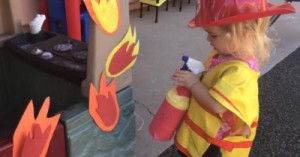



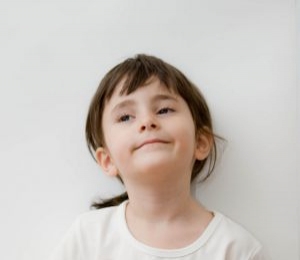 Open ended questions cannot be responded to with one word answers such as yes or no. These types of questions enables a child to provide
Open ended questions cannot be responded to with one word answers such as yes or no. These types of questions enables a child to provide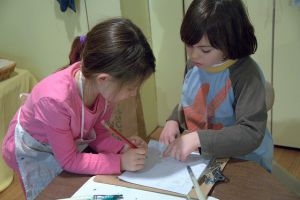 During your child’s preschool years, an important milestone begins to emerge. This is the development of pre-writing skills. Pre-writing skills are used to encourage, develop
During your child’s preschool years, an important milestone begins to emerge. This is the development of pre-writing skills. Pre-writing skills are used to encourage, develop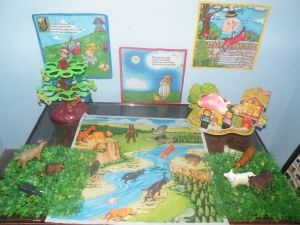 Open ended materials enables children to play freely. They are objects that have no rules to follow, use or function. Raw materials that can be
Open ended materials enables children to play freely. They are objects that have no rules to follow, use or function. Raw materials that can be An Acknowledgment of the Country is a way of showing respect for the Traditional Owners and can be given by both non-Indigenous people and Aboriginal
An Acknowledgment of the Country is a way of showing respect for the Traditional Owners and can be given by both non-Indigenous people and Aboriginal Language plays an important role in a child’s development. It enables a child to communicate effectively with their family, learn at school, socialize with friends,
Language plays an important role in a child’s development. It enables a child to communicate effectively with their family, learn at school, socialize with friends,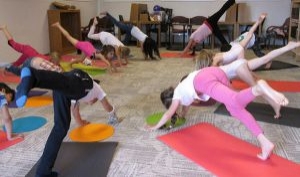 Like adults, children have to deal with their own stress in life. Moving house, starting a new school, preparing for a new sibling - these are
Like adults, children have to deal with their own stress in life. Moving house, starting a new school, preparing for a new sibling - these are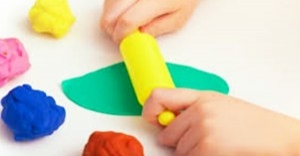 Playdough is such a versatile material. It provides numerous benefits to children as they manipulate it, it is safe and soothing and provides children with
Playdough is such a versatile material. It provides numerous benefits to children as they manipulate it, it is safe and soothing and provides children with Teaching children about sustainability enables them to appreciate and respect the natural environment. Early childhood services can provide meaningful hand on learning experiences in order
Teaching children about sustainability enables them to appreciate and respect the natural environment. Early childhood services can provide meaningful hand on learning experiences in order Recycling is an important concept that teaches children to care for the environment. It encourages children to be responsible and show a growing appreciating for
Recycling is an important concept that teaches children to care for the environment. It encourages children to be responsible and show a growing appreciating for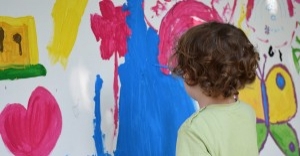 When children apply paint to paper, glue things together, or pound a lump of clay, they experiment with colour, shape design and texture.
When children apply paint to paper, glue things together, or pound a lump of clay, they experiment with colour, shape design and texture.



